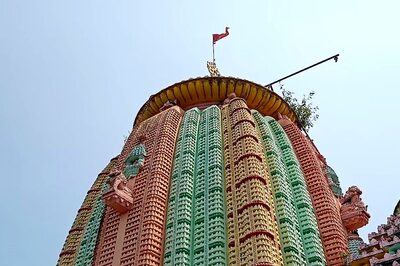
views
New Delhi: In a first for India, the Ramnagar forest department claims to have come up with a solution to the age-old issue of elephants developing sores and infection on their feet. A solution that sounds almost impossibly simple - shoes.
Last year, the forest department had captured elephants following directions from the Uttarakhand High Court to take possession of the animals with private individuals in the state and shift them temporarily to Rajaji National Park.
The Ramnagar Forest department has captured eight elephants since then. The HC had also ordered medical examination of the elephants. “A startling revelation has been made before the court by advocates CK Sharma and Dharmendra Barthwal that the elephants are chained, ill-treated and few elephants are blind but are still being used commercially by the owners of the resorts in Corbett Tiger Reserve area, causing immense cruelty to the elephants. Their conditions are pathetic. Their captivity is in violation of Sections 40 and 42 of Wildlife Protection Act, 1975,” the order stated.
Of the eight elephants at Ramnagar, one elephant, officials said, had developed feet infection. DFO BP Singh told News18, "Time will tell how effective the 'shoes' are.”
"This, we hope, will give relief to the elephant. She was suffering. The infection progressed to the extent that she fell down and had to be lifted with a crane,” an official said.
Officials said that although the infection was treated, the recovery period was slow since the open sores were exposed to dirt and dust, and hoped the 'shoes' would counter this.
Why do Elephants in Captivity Develop Sore Feet
The largest living mammals, Indian elephants carry a massive body mass of up to 5,400 kg. Their feet structure has evolved over times to support this weight. Five toes, two of which are in contact with the ground, and a large fat pad behind the toes allow the elephant to spread out its weight and reduce pressure while walking. In the wild, elephants exercise their feet by walking long distances on rocks, digging and rubbing these fat pads on the ground. This acts as a natural pedicure and keeps the fat pads supple.
The Faculty of Medicine at University of Queensland in Australia noted, "Hard surfaces with floors covered in urine and faeces can cause infections around the pad. A cracked or infected fat pad can’t absorb pressure, effectively making the outside part of the foot more prone to diseases. The most-common problems are toenail cracks, sole overgrowth, trauma, osteomyelitis, ankylosis of the joints and osteoarthritis. It is estimated that 50% of captive elephant deaths are caused by these afflictions."
"Managing foot diseases is challenging because they often only become evident when they have progressed to incurable stages. Diagnostic techniques like imaging are expensive and in most cases require general anaesthesia. Imaging or other hands-on methods are also impractical in most situations,” it added.



















Comments
0 comment